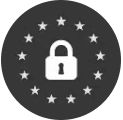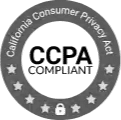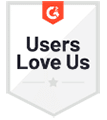Sales Kickoff Training 2021 – You Rocked your SKO, Now What?

Table of Contents
Wow, well done you! You finished your 2021 sales kickoff training!
It was definitely a lot of work, especially this year when everything had to be virtual and you needed to rewrite the whole game plan, but you got there. Everyone had a great time and left it feeling all fired up to sell the hell out of 2021.
But the question is, now what? Your sales teams are all back to their regular schedules, making calls, running pitches, and hopefully securing deals, but are they using the new messaging you launched at the SKO, or trying out the new pitching angles you spent ages presenting?
The SKO is a lot of “new” – new messaging, new products, new features, new company story – and for most companies that goes double this year, because so much had to be adjusted around the impact of COVID-19.
But what happens when the lights go off from the SKO and each sales professional is left alone to make pitches? Does anyone remember what you said? Would you have any way of knowing if they do? How is sales productivity being measured, and who’s monitoring it…and doing something about it?
Sales Kickoff Training is a one-off, but sales continues all year round
SKOs get plenty of attention, but sales managers have no easy way to track how much of the learning stuck with their sales team. That brings up the question of, who’s responsible for that. Is that a Marketing thing or Sales Enablement or Sales Training or Product? Who goes to check whether sellers are using the battlecards correctly, the ones that you worked so hard to create?
Sales enablement is typically on to the next big project once the SKO is over, especially since they are often overstretched across an enormous group of sales professionals and products.
Sales professionals have other pressing issues demanding their attention, so they turn away and leave sales to deal with it themselves. With no one taking responsibility, especially if there’s no sales enablement team, practicing pitches and reinforcing new messaging is left to the sales professionals’ own motivation, which can quickly peter out as they ease back into their comfort zone of what they already know works.
So how do you reinforce your SKO to have an impact on real life sales figures?
What are the Three Questions?
The best way to focus the conversation and keep it customer-centric is to center it around these three questions:
- Why change?
- Why now?
- Why us?
Why Change?
The biggest obstacle to closing a sale is never your competitor, but the status quo. Sticking to the current approach is always the easiest option for any company, because it doesn’t require any effort or decision-making. Reps need to start by giving the potential customer a reason to consider any alternative to their current situation, and only then start promoting your solution.
If the sales rep doesn’t make a successful “case for change” early on in their interactions, they might think that the purchase journey is proceeding smoothly, right up until the prospect suddenly becomes stuck at a later stage and cannot be convinced any further.
Skipping this stage to open with “why us?” means that reps never get the chance to find out what the potential customers need, where they are heading, or which features they most need from your product. Starting out with “why change?” firmly sets the tone of the entire sales process as customer-centric, not product-centric.
There are a number of possible answers to the question of “why change?” By listening carefully to the responses, sales reps will know how to best proceed.
For example, a potential buyer might be ready to consider changing to a cloud-based tool because:
- They need to reduce costs during difficult business times;
- There’s a desire to make the business more efficient by finding a tool that is “X-in-one” to replace multiple platforms that break up workflows;
- Their digital transformation is prompting a shift to the cloud;
- The business is expanding and needs to scale;
- Changing work patterns among a newly remote workforce need for a more flexible, mobile, remote, and/or versatile tool.
Your reps might find that there’s a lot of repetition among the different reasons for change, but that’s ok. That just reinforces the message.
Sales Productivity: First measure it, then manage it
Improving sales productivity means you need to know what’s going on, you can’t grow if you don’t know. The first step is to clarify what you’re looking for. What changes in seller behavior do you expect to see 30, 60 and 90 days after your SKO? It’s important to set specific goals for each period of time and follow up to see if sales teams are meeting them. It could look something like:
- SKO +30: Incorporate all the new messaging and pitches into your calls
- SKO +60: Acquire 5 new opportunities for products discussed at the SKO
- SKO +90: Have at least 1 opportunity progress past stage 3
Then you need to decide how to measure it. What does that behavior change look like in terms of hard metrics like demos requested, sales made, or calls returned? You’ll need to dig a little deeper to look for metrics like how many new opportunities were opened for a product launched at SKO, or to see if the new demos came about due to sales professional’s initiative, or thanks to your marketing campaigns.
Certify, certify, certify
Certification programs are popular in many companies for encouraging sales professionals to learn about new products, improve their understanding of existing ones, and pass assessments. They can be useful for measuring progress and keeping sales professionals on the right track.
Most certification programs use quizzes and various assessments to determine the level of their sales professionals, however only a role-play can give an indication of how comfortable they are actually having a conversation about the learned topic, or how smoothly they can pitch about it, or if they deliver it in a smooth, confident and trustworthy way. And most companies do not have time to do 1:1 role plays with every seller on every possible topic.
Keep up the momentum
You need to introduce the right kind of simulation exercises that will keep up the SKO momentum. Second Nature’s sales training software uses conversational AI to create realistic role-play scenarios that encourage sales reps to refine their pitches and motivates them to keep practicing.
With Second Nature’s AI-based system, you can deliver targeted feedback that helps users identify their weaknesses and work to strengthen them. The program is engaging enough that reps will be motivated to keep using it on their own, without needing managers breathing down their necks, and built-in data analytics enable sales managers and sales enablers to track sales rep completion rate and measure their improvement.
A good SKO never ends
Second Nature can give you the benefits of a year round on-demand SKO without having to have an SKO every day! Sales professionals get the training and guidance when they need and want it, available 24 hours a day 7 days a week.
SKO is an awesome activity, but making sure it impacts on your annual revenue takes much longer. Learn how to turn your SKO into your first step to year long success, SKO 2 SKO!
We’re Hiring
We have positions available in our Tel-Aviv and New York offices and remote/hybrid.

 9 MIN. READING
9 MIN. READING


